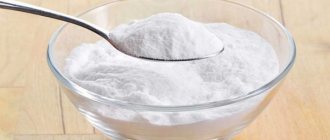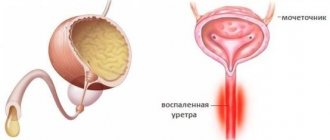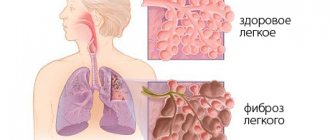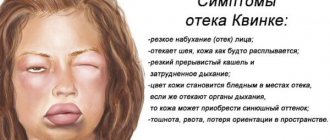- October 16, 2018
- Diseases and conditions
- Elena Zhmakina
The human nervous system plays a very important role. The skin, muscles, joints, ligaments and sensory organs send signals through the peripheral nervous system to the central nervous system. The quality of human life depends on these processes. Often after an illness, complications arise that are characterized by degenerative and dystrophic changes in tissues. A person does not feel or perceive pain or temperature changes in certain areas of the body. This condition is called neuropathy. What it is and what folk remedies are used for treatment, we will consider further.
What is neuropathy
The human peripheral nervous system is very sensitive to damaging processes. Damage to non-inflammatory nerves is commonly called neuropathy. Various changes in the degenerative-dystrophic nature of peripheral nerve endings are a characteristic of this disease. The process may involve several nerves in different parts of the human body or in one.
The disease develops when nerve cells are depleted and damaged. If the cause is not eliminated, the process will progress. It can develop in both adults and children, and regardless of gender.
Types of pathology
Depending on the nature of nerve damage, neuropathy occurs:
- Diabetic. Develops in diabetes mellitus.
- Alcoholic. Regular consumption of alcoholic beverages leads to a decrease in the absorption of nutrients and vitamins into the blood, which leads to damage to nerve fibers - neuropathy.
- Post-traumatic. With mechanical damage to nerve fibers. This may be the result of surgery or injury.
- Ischemic. Impaired blood circulation and blood supply to nerve endings.
- Peripheral. Disturbance in the transmission of nerve impulses from the central nervous system to organs.
- Sensory. The sensitivity of an organ in the body is impaired.
- Autonomous. The functions of some organs and systems are disrupted due to a malfunction of nerve fibers or their absence. The most dangerous form of pathology.
- Motor. Impaired motor activity. A person cannot control movements, sensitivity is lost.
Type of neuropathic pain
Depending on the intensity of pain and their location, the following types of neuropathic pain are distinguished:
1. Moderate pain - burning and tingling occurs in the upper and lower extremities. It does not cause physical pain, but causes psychological discomfort with its persistence.
2. Pressing pain - burning or tingling appears in the legs. Untreated lower extremity neuropathy progresses and leads to gait problems.
3. Short bursts of pain . They feel like a sharp spasm, which after a couple of seconds moves to another part of the body.
4. Increased sensitivity of the skin . Physical contact with any surface leads to unpleasant sensations and pain at the point of contact. This forces the patient to sleep in the same position, and also to refuse clothing made of thick fabrics.
There are two phases of neuropathic pain: acute and chronic.
The acute phase is characterized by attacks of stabbing sensations that quickly pass. Chronic neuropathic pain manifests as mild tingling sensations during the day that lead to sleep disturbances at night.
According to statistics, 7 out of 100 people suffer from some type of neuropathic pain. In recent years, the number of people with this disease has increased. This is due to the fact that detection and diagnosis methods have improved.
Causes of neuropathy
There are several reasons that contribute to the development of neuropathy:
- metabolic disorders in the body;
- insufficient amount of vitamins or improper absorption;
- endocrine disorders;
- tumors of various etiologies;
- nerve fiber injuries;
- long-term exposure to toxic substances on the body;
- vasculitis;
- chronic alcoholism;
- significant hypothermia;
- weak response of the body to environmental factors;
- circulatory pathology;
- infections of viral and bacterial nature;
- hereditary factor.
The disease also develops after the use of chemotherapy. Treatment of neuropathy with folk remedies after chemotherapy (palliative chemotherapy) can be used in conjunction with medications.
Treatment of polyneuropathy at home
Polyneuropathy develops in patients suffering from diabetes mellitus, alcoholism, and demyelinating diseases. Peripheral nerve damage can be caused by:
- drug overdose;
- viral and bacterial infections;
- metabolic disorders;
- chemical poisoning;
- oncological diseases;
- dysfunction of the liver and kidneys.
Doctors at the Yusupov Hospital begin treatment of polyneuropathy with treatment of the disease, which has become the root cause of disorders in the nervous system. Healers believe that with the help of folk remedies it is also possible to qualitatively complement the modern treatment of polyneuropathy, which will significantly accelerate the removal of numerous toxins from the body and improve metabolic processes in nerve fibers. There are many different folk methods and remedies to get rid of polyneuropathy.
To quickly treat alcoholic polyneuropathy, healers recommend using a special cocktail. To prepare it you will need:
- 100 ml freshly squeezed carrot juice:
- 1 chicken egg yolk;
- 2 tablespoons of quality olive oil;
- 2 teaspoons honey.
All ingredients should be mixed thoroughly. This cocktail can be consumed twice a day before each breakfast and dinner, approximately 40 minutes before meals.
Herbalists recommend various infusions as remedies for polyneuropathy. You can brew 1 tablespoon of well-chopped bay leaf and 3 tablespoons of fenugreek seeds in a small thermos with one liter of boiling water. The mixture must be infused for two hours. This infusion can be drunk throughout the day to quickly quench your thirst. It perfectly helps control acceptable blood sugar levels and helps prevent vascular damage. While using the infusion, you should not exclude taking medications prescribed by your endocrinologist. If necessary, the doctor changes the insulin dosage.
Symptoms of the disease
Difficulties may arise when making a diagnosis. The type of nerve fiber that is damaged is of great importance. Symptoms of diabetic neuropathy:
- changes in muscle structures;
- tingling in the limbs;
- different sensations in the limbs at the same time, coldness is felt in them on the right, and a burning sensation on the left;
- crawling “pins and needles” in the limbs;
- burning sensation;
- increased sensitivity to tactile touch, which can cause pain;
- feeling of gloves or socks on the limbs, while the legs and arms are bare;
- pain in the arms and legs, especially at night;
- With neuropathy, wounds take a very long time to heal.
I would like to note that as diabetic neuropathy progresses, autonomic neuropathy may develop. Its symptoms are already reflected in the functioning of internal organs:
- attacks of tachycardia during the rest period;
- dizziness;
- problems with urination;
- nausea, vomiting;
- irregular bowel movements;
- when the bladder is full, there is no urge to urinate;
- erectile function is impaired;
- increased sweating;
- very dry skin;
- loss of consciousness for no apparent reason.
When the facial nerve is damaged, the following symptoms are characteristic:
- lacrimation;
- salivation;
- taste disturbance;
- possible dry eyes;
- in the area of the affected nerve, half of the face seems to freeze, the eye does not close completely, it is impossible to blink;
- the front of the tongue becomes numb.
After injury to the knee or ligaments, bone fractures, as well as after surgery, neuropathy of the peroneal nerve is possible. The following symptoms are characteristic:
- There is difficulty bending or straightening your toes.
- Foot drop.
- The ability to rotate the foot is lost.
- When walking, your leg suddenly twists.
- I can't walk on my heels.
Symptoms
Neuropathic pain is accompanied by impaired skin sensitivity. It manifests itself in the form of pain in response to stimuli that do not cause such a reaction in a healthy person.
This phenomenon is called “allodynia” and can have both mechanical and thermal origin.
In the first case, pain occurs due to touching or pressing on the skin. Thermal allodynia is caused by exposure to heat or cold. This manifestation of neuropathic pain is not eliminated by analgesics and intensifies at night.
The patient experiences pain when covering himself with a blanket or wearing clothes.
In addition to allodynia, the following symptoms of neuropathy are noted:
- decreased muscle strength. Without proper treatment, muscles decrease in volume over time. Physical therapy is designed to combat this;
- causeless goosebumps and numbness. There is a feeling as if insects are crawling on the skin;
- feeling of coldness in the hands and feet. Chills may occur;
- regular occurrence of pain for six months or more;
- discomfort when touching the surfaces of objects, decreased or increased sensitivity. Over time, the unpleasant sensations develop into full-fledged neuropathic pain.
These factors lead to the appearance of secondary symptoms. These include:
- stress;
- insomnia;
- apathy;
- irritability.
Often the patient himself does not always identify the sensations he experiences as pain. Most often you can hear references to “many thorns,” “splinters,” or electric current discharges.
Treatment regimen
Depending on the cause of the disease, as well as its form and degree, treatment is selected. The scheme is as follows:
- Eliminating the cause.
- Removing the inflammatory process, if any.
- Elimination of pain syndrome.
- Restoring the functions of damaged nerve endings.
- Activation of recovery processes.
- Treatment of concomitant diseases that cause neuropathy.
- Preventive actions.
Neuropathy in babies
Currently, thanks to modern diagnostics, the development of neuropathy in a child can be detected at an early stage. The disease is diagnosed in 75% of cases before the age of 10 years. The following symptoms are characteristic:
- foot deformity;
- walking on tiptoes, changes in gait;
- trembling of hands and feet, problems with fine motor skills;
- muscle thinning and dystrophy;
- frequent dizziness;
- leg pain and cramps;
- indigestion;
- optic nerve atrophy;
- deformation of the feet, toes, possibly lower legs;
- cardiopalmus;
- feeling of burning, tingling, crawling.
Eliminating illness in children
If your child is diagnosed with neuropathy, you should immediately consult a doctor. Folk remedies should not be used to treat this disease in children. Only correctly selected medications and doctor’s recommendations will help prevent the progression of a neurological disease. What drugs are used:
- To treat diabetic neuropathy, medications that lower blood sugar are used.
- For uremia - agents that promote the removal of protein breakdown products.
- In case of poisoning, use medications that remove heavy metal salts.
- For infectious diseases - antibiotics.
- For malignant processes - chemotherapy and radiation therapy.
The following treatment methods are also effective for children:
- massage;
- plasmapheresis;
- electrical stimulation of the spinal cord;
- reflexology;
- magnetotherapy.
Drugs to lower blood pressure and analgesics are widely used. A complex of vitamins is also prescribed to maintain and stimulate the body. Treatment of diabetic polyneuropathy in children should be carried out under the strict supervision of a physician. You can use any folk remedies only after consultation.
Treatment of neuropathy after chemotherapy
When undergoing such treatment, patients experience a side effect such as neuropathy in 60% of cases. Several factors influence how difficult this process can be:
- Presence of diabetes, kidney or liver failure.
- Predisposition.
- Accumulation of toxins from previous therapy.
- Presence of concomitant diseases.
- Drinking alcoholic beverages.
- The body's reaction to a single dose of chemotherapy.
Currently, many experts emphasize the imperfection of the drugs that are used to treat neuropathy. After chemotherapy, the following drugs may be prescribed:
- "Trental."
- "Instenon."
- "Mexidol".
- "Actovegin".
- "Cytochrome C".
- I would like to note that the treatment of diabetic polyneuropathy with Actovegin is popular. Since this drug promotes the utilization of glucose, improves blood microcirculation in the vessels.
Application of herbs
There are many recipes for treating neuropathy with folk remedies. Here are the most popular ones:
- Rosemary. A tincture is prepared from the plant. Fresh leaves are poured with vodka, placed in a dark place and shaken periodically. It should last 3 weeks. At the end, the tincture is filtered and can be used as a rub on sore spots.
- Burdock. The root of this plant in the amount of 1 tbsp. l. it is necessary to boil for 5 minutes in 250 g of red wine. Leave for some time and take half a glass 2 times a day.
- Elecampane. Elecampane root 1 tbsp. l. cook for 5 minutes in 250 g of water. Leave the product for 30 minutes and take half a glass 2 times a day an hour before meals. Drink it for a month.
- Spicy cloves. You need 1 tbsp. l. dried cloves, pour 600 ml of boiling water and leave for 2 hours. It is better to use a thermos for this. Take 3 times a day, 200 ml. The course is 15 days with a break of 10 days for 6 months.
Treatment of neuropathy with folk remedies after chemotherapy accelerates the recovery process of patients. But they should be used only after consulting a doctor.
Treatment of polyneuropathy with decoctions
In order to prepare a decoction for the treatment of polyneuropathy, you can take one tablespoon of crushed Eleutherococcus root, add it to 300 ml of boiling water, and then boil the mixture for 20 minutes over low heat. The decoction should steep for 15-20 minutes. After this, add 2 tablespoons of freshly squeezed lemon juice and 1 tablespoon of acacia honey. The decoction is drunk in random portions throughout the day.
The second recipe looks like this:
- Brew 4 tablespoons of dry Ginkgo biloba leaves with one liter of boiling water;
- infuse the product for three hours;
- Take during the day instead of tea.
To prepare the following decoction you will need:
- elder flowers;
- series;
- burdock root;
- cocklebur herb;
- hop cones;
- bedstraw;
- jasmine;
- birch leaves;
- liquorice root;
- verbena herb.
All ingredients are thoroughly ground in a mortar. Brew 2 tablespoons of the mixture with 800 ml of boiling water in a small thermos and leave for three hours. During the day, the collection should be drunk completely instead of tea.
Natural cinnamon with delicious oregano can act as a powerful antioxidant. To prepare a folk remedy for treating polyneuropathy, oregano leaves are dried, then crushed and combined in equal proportions with regular ground cinnamon. Next, the spicy powder is mixed with the same amount of natural honey. Traditional healers recommend taking one teaspoon three times a day with warm water. The course of treatment for polyneuropathy is 40 days.
Preventing the development of polyneuropathy is much easier than treating it. The main prevention of the disease is the timely removal of toxins that appear during poisoning or infectious diseases. Of no small importance is the complete abstinence of alcoholic beverages and psychotropic drugs. Any doctor’s prescriptions during the treatment of polyneuropathy with folk remedies must be followed strictly. Only a neurologist can change the dose of the drug or discontinue the drug. Good nutrition and regular physical activity are also effective means of preventing polyneuropathy.
Ulnar nerve neuropathy
Treatment with folk remedies has always been used for various diseases. With neuropathy, the cause must first be determined. It could be:
- shoulder injury;
- compression of the nerve during sleep;
- frequent consumption of alcoholic beverages;
- prolonged compression of the nerve when walking on crutches;
- infectious diseases.
Lack of timely treatment can lead to complete paralysis of a limb. Folk remedies are used after consultation with a doctor, as an addition to the main treatment. The following recipes can be recommended:
- Blue clay. Lumps are made from it, which are then dried in the sun. It is necessary to prepare a bandage on which clay diluted with warm water is applied. Apply to the sore spot. Do not remove the bandage until the clay dries. Bury the used product in the ground. A new compress requires fresh clay.
- Alcohol compress. To do this, you need to take ammonia - 150 g, camphor - 50 g, medical alcohol - 250 g. All ingredients are poured into a three-liter jar and filled with a liter of purified water. Store unopened. Must be shaken before use. Apply as a compress to the sore spot three times a day for 30 minutes.
- Ground pear. Pour 150 grams of leaves of this plant into 3 liters of boiling water and leave for 2 hours. Wipe your hands with the resulting product.
Only by eliminating the cause of radial nerve neuropathy can treatment with folk remedies have a good effect. Mud therapy gives positive dynamics. Much depends on the depth and extent of the lesion.
Treatment for facial neuropathy
If treatment with folk remedies is used for neuropathy of the facial nerve, the result will not be long in coming.
Below are some recipes:
- The affected part of the face can be treated using salt. Make a bag from natural fabric, heat the salt in a dry frying pan in the amount of 400-500 grams. Then it is applied to the damaged part of the face 3 times during the day. The duration of treatment is 2-3 weeks.
- Mud masks also have a healing effect. The mud is diluted with warm water at 35-40 degrees and applied to the area of the affected nerve for 20 minutes. Apply the mask every other day. It enriches facial tissues with minerals and trace elements, which enhances the therapeutic effect of the drugs.
- Marshmallow root is taken orally and used as a compress. To do this, pour 3 tablespoons of raw material into a glass of boiling water. Then leave in a sealed container for 2 hours. The infusion is drunk warm, heated to 30 degrees. Take half an hour before meals, 3 times a day, 0.25 cups. Compresses are applied for 20-30 minutes 3 times a day. Treatment lasts 1 month.
Neuropathy of the legs
The most common type of disease is neuropathy of the lower extremities. We will consider symptoms and treatment with folk remedies below.
Characteristic manifestations:
- weakness of the muscles of the lower extremities;
- pain in the legs;
- decreased skin sensitivity in certain areas;
- burning, tingling in the legs;
- swelling of the feet;
- change in gait;
- decreased or absent reflexes;
- tactile contact causes pain;
- in advanced cases there are ulcerative skin defects.
Causes of neuropathy
Modern medicine knows a large number of reasons that lead to the development of neuropathy of the legs.
The most common ones include:
- Poisoning. Intoxication is possible from the effects of alcohol, arsenic, mercury, carbon monoxide, and medications on the human body.
- Diabetes. In this case, neuropathy occurs as a complication. In advanced stages, diabetic neuropathy leads to amputation of part of the lower limb, most often the foot, due to damage to the muscles, bones and skin. About diabetic foot - the initial stage, symptoms and treatment, read here.
- Lack of vitamins. Vitamin B deficiency usually leads to the development of neuropathy.
- Injuries. Nerve fibers are damaged by injury, hypothermia, radiation exposure, and also during sports.
- Endocrine, autoimmune infectious diseases.
- Multiple sclerosis . This reason is more typical for older people.
- Heredity. Thus, one of the manifestations of the genetic disease Charcot-Marie-Tooth amyotrophy is leg neuropathy.
Eliminating leg neuropathy with folk remedies
For treatment, not only medications are used, but also various procedures. In addition to basic therapy, many use recipes that have been proven over the years and by people. Let's look at some of them. Treatment with folk remedies for neuropathy of the lower extremities involves the use of the following recipes:
- Salt baths. For a bucket of warm water use 200 grams of salt and 2/3 cup of 9% vinegar. The bath is done every day for 20 minutes before bedtime for 1 month.
- Camphor oil is applied to the feet with massage movements. Leave for 10-15 minutes. After the oil is absorbed, rub your feet with alcohol and put on warm socks. The procedure is performed before bedtime for a month.
- Calendula helps in the form of an infusion. 2 tablespoons of flowers are poured with boiling water. Leave for 15 minutes. Take 100 ml per day daily for a month.
- Walking barefoot through young nettles.
- Walking on warm sand, earth, grass with bare feet.
Polyneuropathy of the lower extremities: treatment with folk remedies – Neurology
05.02.2020
Movement is life. Every person has heard this phrase more than once. In case of manifestation of leg diseases, the course of life changes radically . A disease such as neuropathy of the lower extremities can significantly complicate the existence of any person.
Neuropathy – what is it?
Neuropathy is a type of nervous system disease. It can appear at any age when nerve fibers are damaged or depleted.
Treatment
Therapeutic tactics for neuropathy:
- It is aimed at restoring nerve fibers, that is, the causes of the disease, and not eliminating pain and other symptoms.
- A combined approach (combining medication and physiotherapeutic treatment) is considered the most effective.
- At home, you can combine drug treatment and treatment with folk remedies.
Drug treatment includes:
- Drugs that restore the conduction of impulses along nerve fibers;
- Anticonvulsants;
- Muscle relaxants;
- Hormones (glucocorticosteroids);
- Complex of vitamins;
- Antidepressants;
- Analgesics;
- Anti-inflammatory drugs;
- Plasmophoresis.
The following physiotherapy procedures are prescribed:
- Magnetotherapy;
- Various types of massage;
- Electrical stimulation of damaged nerve fibers;
- Exercise therapy – to maintain muscle tone;
- Reflexology.
Treatment must be started in the initial stages of the disease. The patient must strictly follow the doctor’s instructions, otherwise he faces serious complications in the form of disability or even death.
Folk remedies
For neuropathy of the lower extremities, do not forget about alternative treatment.
The following recipes have shown their effectiveness:
- Saline solution. Pour 200 grams into half a bucket of hot water. salt and 9% vinegar (2/3 cup). Place your feet in the bucket for 20 minutes. The procedure must be repeated every day for a month.
- Foot baths. Boil 500 gr. pine needles for half an hour. Add 2 tablespoons of chopped red pepper to the cooled solution. Add hot water to the solution and steam your feet for up to 30 minutes.
- Egg and honey cocktail. Beat 4 teaspoons of olive oil with the yolk of 1 egg. Pour this mixture into 100 ml of carrot juice and add 2 teaspoons of honey. The cocktail is drunk 2 times a day before meals.
- Kefir with sunflower seeds and parsley. This drink will help saturate depleted nerve fibers with vitamins. Grind the seeds and parsley and add to 300 ml of kefir (the percentage of fat content does not matter). Take 40 minutes before breakfast, on an empty stomach.
- Calendula tincture. Brew 2 tablespoons of calendula in a glass of boiling water, leave for 30 minutes. Take 100 ml every day.
- Herbal infusions: No. 1. Garlic powder, goldenseal, dried and crushed red clover, sage, fenugreek, cassia bark, black cohosh mixed. Take 2 tablespoons of the mixture and leave for 2 hours in 600 ml of boiling water. The infusion is taken three times a day, 100 ml. No. 2. Dried string, elderberry flowers, burdock root, cocklebur, hop cones, birch leaves, jasmine, bedstraw, licorice root, verbena are crushed and infused for 3 hours in 800 ml of boiling water. Drink like tea throughout the day.
- Eleutherococcus with honey and lemon. Boil a tablespoon of Eleutherococcus root in 300 ml of boiling water, leave for about 15 minutes, then add 2 tablespoons of lemon juice and a spoon of acacia honey to the solution. Taken in any portion throughout the day.
- Clay compresses. Blue or green clay is used. Dilute 100 grams of clay until creamy, and then apply to the desired area. The clay must dry.
- Camphor oil. Rub the oil into the affected area using massage movements. After 15 minutes, treat the area with alcohol and wrap it with cloth. This procedure is best done before bedtime.
- Mustard oil. It needs to be rubbed into the skin of the feet with massage movements until completely absorbed.
- Physical exercises: rotating the feet in different directions, stretching the legs for the muscles of the lower extremities, rolling from toe to heel.
Read about how and what to treat cracks between your toes here.
Treatment with folk remedies - fiction or help?
As practice has shown, treatment of neuropathy of the lower extremities with folk remedies is effective and gives a positive result only if these methods are used as a supplement to the main treatment.
There are several types of this disease:
- Peripheral. In this case, the damage to the nerves depends on their location. If the fibers of the motor system are damaged, it can lead to muscle atrophy. Initially, the patient will be worried about muscle weakness. Numbness in the legs and acute pain are a consequence of damage to the nerve canals. When the autonomic system is damaged, the water balance of the skin is disrupted and immunity is reduced.
- Post-traumatic. The cause of its occurrence is damage to the spinal cord, injury to the nerve trunks.
- Alcoholic. With alcoholism, a person is characterized by a large lack of vitamins, which leads to depletion of nerve fibers. This is the cause of this type of neuropathy.
- Ischemic. Nutrition affects the condition of nerve fibers. An incorrect diet leads to their depletion. The consequence of ischemic neuropathy can be thrombosis and dizziness.
- Diabetic. It is a complication of diabetes, in which the somatic and autonomic peripheral nervous systems are damaged. In turn, this leads to severe muscle pain, disability (a person simply will not be able to walk) and sometimes death (if the heart functions abnormally).
Causes of neuropathy
Modern medicine knows a large number of reasons that lead to the development of neuropathy of the legs.
The most common ones include:
- Poisoning. Intoxication is possible from the effects of alcohol, arsenic, mercury, carbon monoxide, and medications on the human body.
- Diabetes. In this case, neuropathy occurs as a complication. In advanced stages, diabetic neuropathy leads to amputation of part of the lower limb, most often the foot, due to damage to the muscles, bones and skin. About diabetic foot - the initial stage, symptoms and treatment, read here.
- Lack of vitamins. Vitamin B deficiency usually leads to the development of neuropathy.
- Injuries. Nerve fibers are damaged by injury, hypothermia, radiation exposure, and also during sports.
- Endocrine, autoimmune infectious diseases.
- Multiple sclerosis . This reason is more typical for older people.
- Heredity. Thus, one of the manifestations of the genetic disease Charcot-Marie-Tooth amyotrophy is leg neuropathy.
Symptoms
This foot disease is characterized by many manifestations. They depend on the cause of neuropathy, as well as on which nerve is affected.
In medicine, it is customary to divide the symptoms of lower extremity neuropathy into three groups:
- Sensory disorders (appear when sensory nerve fibers are damaged): aching, twisting pain appears in the area of nerve damage; unpleasant sensations similar to an insect crawling on the skin, the presence of a foreign body in the muscles; disturbances of certain types of sensitivity. In this case, the pain threshold may increase or decrease, and the foot may no longer recognize the temperature of the surface or its type.
- Motor disorders (characteristic of damage to motor nerve fibers): decreased knee and Achilles reflex, which only manifests itself when seen by a neurologist. In everyday life, a person himself will not be able to notice these changes. This is only the beginning of motor disorders, when reflexes can still be restored. It will be impossible to do this if the form is running; cramps and spasms in the leg muscles; weakness in the leg muscles. It usually appears after the knee and Achilles reflex weakens. Initially, weakness will occur under certain loads. Then it will appear in a state of rest. Over time, the person will have difficulty walking and will need a cane or crutches; thinning of muscles and, as a consequence, their atrophy. The speed of development of this process depends only on the cause of neuropathy. Usually, it proceeds rather slowly and can drag on for several years.
- Vegetative-trophic changes (characteristic of damage to autonomic nerve fibers). They are expressed in dry skin, hair loss, poor wound healing, swelling, and the appearance of age spots. In advanced forms, gangrene may develop. Read about how to identify gangrene of the lower extremities at the initial stage here.
Diagnostics
Correct treatment of lower extremity neuropathy depends on timely diagnosis and elimination of the cause that led to the development of this disease. At the first symptoms of neuropathy, a person should consult a doctor, who should conduct an external examination to detect changes in reflexes and sensitivity of the legs.
To confirm the diagnosis, the following diagnostic methods are used:
- Feeling the leg muscles;
- Ultrasound of internal organs;
- Blood chemistry;
- Electroneuromyography;
- Spinal tap;
- X-ray;
- Study of cerebrospinal fluid.
Carrying out these studies will help not only confirm the presence of neuropathy of the lower extremities in a person, but also establish the cause of this disease. Only then will it be possible to determine the correct treatment.
Neuropathy is a serious disease that can have equally serious consequences. It is for this reason that when you notice the first symptoms of the disease, described in detail in this article, you should immediately consult a doctor.
Self-medication does not always lead to positive results. Only a specialist can determine the cause of neuropathy by conducting certain studies. Eliminating the cause, not the symptoms, will stop the progression of the disease.
Source:
Traditional methods of treating polyneuropathy - Traditional medicine - MirTesen media platform
Impaired blood circulation in the body and insufficient nutrition of the nerves leads to pathology of the peripheral nervous system, that is, to polyneuropathy, in which the main nervous functions - sensitive and motor - are disrupted.
The process begins symmetrically: first the fingertips are affected, then the “socks and gloves” areas are formed, then “stockings and long gloves”. In parallel, there is a development of destructive innervation of organs within the body.
These symptoms occur as a complication after diseases or painful conditions.
Traditional methods of treating polyneuropathy will significantly improve metabolic processes in nerve fibers and remove toxins from the body. But you need to remember that, first of all, you need to cure the disease that led to polyneuropathy.
Traditional medicine recommends the following methods of treating polyneuropathy:
A folk method for treating polyneuropathy of the lower extremities with vinegar tincture.
0.5 liters of vinegar are combined with ½ cup of crushed wild rosemary and, tightly closed, left for 10 days. After this period, mix 1 tbsp. tinctures with 1 tbsp. water. Rub your feet with this mixture 2-3 times a day.
Treatment with ginger-St. John's wort oil.
Take a bunch of fresh St. John's wort, chop it and put it in a half-liter jar. Pour the contents with warm vegetable oil. The mixture is infused for 20 days, always in a dark place. Then strain the prepared St. John's wort oil, add 1 tbsp.
powdered ginger root. Mix everything thoroughly - the ginger-St. John's wort oil is ready. It is used to massage the upper and lower extremities. You can also wrap your arms and legs using this product. These procedures are carried out twice a day.
Source: https://maestro-vu.ru/depressiya/polinejropatiya-nizhnih-konechnostej-lechenie-narodnymi-sredstvami.html
Popular treatments
Treatment of neuropathy with folk remedies is popular due to its ease of preparation. Not only herbal infusions can treat neuropathy. Let's look at a few more popular recipes:
- Goat milk. Apply compresses to damaged areas. Moisten gauze with warm milk and apply for a while. Repeat several times during the day.
- Mumiyo. Dissolve 0.2 grams of mumiyo in a glass of warm milk. Drink on an empty stomach 2 times a day. You can add honey. The course of treatment is 3 weeks.
- Apple vinegar. Apply moistened gauze as compresses for several minutes.
- Add water to the garlic and bring to a boil. Moisten gauze with the infusion and apply to the damaged area.
- Dates. It is necessary to remove seeds and grind in a meat grinder. Eat 2-3 teaspoons after meals every day for a month. You can add milk.
- Warming procedures using turpentine. Mix two tablespoons of the product with a small amount of water. Soak a piece of bread with the mixture and apply to the damaged area. Carry out the procedure before bedtime. Feet should be warm all night. Repeat after 2 days.
Polyneuropathy of the lower extremities: treatment and recovery
Polyneuropathy is a pathology of the peripheral nervous system. Its treatment involves both the prescription of medications and the use of traditional medicine.
Description of the disease
Polyneuropathy is a serious disorder of the motor and sensory functions of the nerves. The disease is symmetrical and begins its development from the tips of the toes, reaching the upper extremities. It is a consequence of changes in blood supply and nerve nutrition.
Among the main causes, doctors identify diabetes, chemical poisoning, a history of infectious diseases (HIV, tuberculosis, herpes), and hereditary predisposition.
In women, pregnancy can be a provoking factor, resulting in vitamin deficiency and weakened immunity.
Symptoms and treatments
Depending on the area affected by the pathological process, the disease can be sensory, motor, or vegetative.
In the case of sensory polyneuropathy, patients complain of pain and a tingling sensation after touching the limbs. With motor disease, damage occurs to the nerves responsible for motor activity.
The vegetative form is characterized by increased sweating, weakness, and high fever.
Depending on the cause of the disease, polyneuropathy can be toxic, demyelinating, alcoholic, diabetic or axonal.
Each of the varieties has characteristic features. The following symptoms are common to the disease:
- loss of sensation on the skin of the foot;
- numbness and pins and needles sensation along the affected nerve;
- inability to move;
- pain syndrome in various parts of the lower extremities.
An integrated approach is usually used for treatment: the use of medications, physiotherapy, and traditional medicine methods. Medicines are prescribed to treat the underlying problem or root cause of a disease. Traditional methods help remove toxins, improve metabolic processes, and speed up the recovery period after an illness.
Food use
Various foods are used in the treatment of many diseases. Polyneuropathy of the lower extremities is no exception in this matter. The advantage of this treatment is that you don’t have to look for ingredients, because they are found in almost every home.
- Kefir
. This drink helps eliminate toxins and saturate nerve fibers with vitamins. You will need to mix 300 ml of low-fat kefir with 2 tablespoons of sunflower seeds and half a glass of chopped parsley. This composition is recommended to be consumed before meals every day. - Goat milk
. Soak a bandage or gauze in heated milk, then apply to the affected area for 2 minutes. To obtain a lasting therapeutic effect, the procedure is repeated several times a day. - Dates
. Several ripe fruits need to be pitted and peeled, minced in a meat grinder or crushed in a blender. The mixture should be consumed daily, 2-3 tablespoons after meals. If desired, dates can be mixed with milk. The course of treatment is 1 month.
You can also mix radish juice, honey and alcohol in a ratio of 3:2:1. It is better to store the product in the refrigerator. When the disease worsens, it is rubbed into the affected limb.
Healing decoctions
Polyneuropathy is treated with various herbs. They are safe for the human body. In addition, they can be purchased in dry form at almost every pharmacy.
| Main Ingredients | Recipe |
| Elecampane root part, water | Usually take 250 ml of water and a tablespoon of crushed roots. They should be simmered over low heat for 5 minutes. Then the product is infused for several hours and filtered. It should be consumed in its pure form, half a glass. The procedures are repeated twice a day before meals. |
| Hazel, water | You will need a tablespoon of the leafy part and a teaspoon of the powdered bark component. They are mixed with 200 ml of water. The composition is boiled for 10 minutes, then cooled to room temperature. Drink it 100 ml 4 times a day. The duration of such treatment should be at least a month. |
| Eleutherococcus root, water, lemon juice, acacia honey | Mix a tablespoon of raw material into 300 ml of boiling water and simmer over low heat for about 20 minutes. Then you need to add 2 tablespoons of freshly squeezed lemon juice and a spoonful of acacia honey to the broth. Take the decoction in small portions throughout the day. |
The recipes listed are safe. However, they can provoke allergies. In this case, it is better to refuse treatment with folk remedies.
Application of oils
Various oils have always been used in folk medicine. By adding herbs and medicinal plants to them, people made healing tinctures. Subsequently they were used for rubbing or wrapping.
To prepare the first tincture, you will need to fill a 0.5 liter jar with chopped St. John's wort herb. Then add warm vegetable oil to the dry mixture. Its temperature should not exceed 60 degrees.
The product is infused in a dark place for at least 20 days. After this time, you need to strain it and add a tablespoon of ginger root powder.
The tincture can be used both for massage of the affected limb and for wraps.
Another recipe involves using olive oil. You need to grind 4 tablespoons of milk thistle seeds in a mortar and combine with 150 ml of oil. Then add 2 tablespoons of powdered dry mint. Take the resulting medicine before meals, 2 tablespoons. You can drink it with plain water. The duration of therapy is usually at least 20 days.
Warming massage and calendula
For polyneuropathy, especially in cases of damage to the sciatic nerve, massage can be done. Turpentine oil is used for it, which has a warming effect.
The procedure involves performing stroking movements, while simultaneously rubbing the product into the skin. After this, the affected lower limb should be wrapped up and put on tights or warm pants.
It is better to do a massage before bed. The course of treatment is at least 10-15 daily procedures.
In addition to massage, traditional healers recommend making calendula tincture. It is consumed internally. To prepare, you will need to steep 2 tablespoons of the plant’s flowers in 400 ml of boiling water for two hours.
Then the product should be filtered and cooled to room temperature. Take it half a glass 4 times a day before meals.
The course of treatment is not limited to a certain period of time; it is continued until the unpleasant symptoms completely disappear.
Useful properties of clay
One of the effective means of treating polyneuropathy of the lower extremities is clay. It is better to choose blue or green. Before using it, it is recommended to form small balls from the raw materials and dry them in the sun for several days.
For the first recipe, you will need to dilute a small amount of clay in warm water until it becomes mushy. Then apply it to gauze or cloth.
After this, the composition should be applied to the affected area and secured with a bandage. The clay must be kept until it dries completely.
It is permissible to repeat such procedures several times a day, but each time it is necessary to take fresh raw materials.
For the second recipe, you will need to dilute 20 g of clay in 150 ml of warm water. The mixture should be consumed 15-20 minutes before meals 3 times a day. The duration of such treatment should not exceed two weeks, after which it is necessary to take a break. To enhance the therapeutic effect, clay can be taken not only internally, but also made into therapeutic compresses.
Infusions against polyneuropathy
Bay leaves are popular in folk medicine. In case of polyneuropathy, you need to mix a tablespoon of crushed leaves, mix 3 tablespoons of fenugreek seeds and brew in a 1 liter thermos.
This composition must be infused for at least two hours. It is recommended to take it in small portions throughout the day to quickly quench thirst and eliminate the symptoms of polyneuropathy of the lower extremities.
Treatment with drugs cannot be stopped during this time.
The next version of the infusion requires mixing 0.5 liters of vinegar, 100 g of crushed wild rosemary. The container must be closed with a tight lid and left in a dark place for 10 days. It is recommended to shake the mixture thoroughly before use. For one serving you will need to take a tablespoon of tincture and dilute it with a small amount of water. Apply the product to rubbing the affected limbs.
Therapeutic baths
Baths with the addition of various herbs and decoctions have proven themselves in the treatment of polyneuropathy of the lower extremities. You can use calendula flowers, chamomile, oak bark. Dill is no less effective.
Before the procedure with dill, you need to warm up well in the sun.
Therefore, this treatment option is suitable for patients with exacerbation of the disease in the summer.
To prepare the infusion, you will need to brew a glass of dill seeds in 200 ml of boiling water and strain. Then it can be added to the bath with already prepared warm water.
The difference between the temperatures of the liquids should be minimal.
It is recommended to continue warming up in the bathroom for at least 20 minutes. It is better to repeat the procedure itself every 24 hours. This will allow you to get the maximum therapeutic effect and quickly relieve the unpleasant symptoms of the disease.
Uses of cinnamon, rosemary and garlic
Cinnamon is a strong antioxidant. However, to combat polyneuropathy, it is usually used together with oregano.
To prepare the medicinal product, the leaves of the latter must be dried and crushed. You need to combine oregano and cinnamon in equal proportions. Then you need to add a small amount of honey to the powder.
It is recommended to take the product one teaspoon at a time with a sufficient amount of water.
Rosemary is often used to treat polyneuropathy. The leafy part of the plant must be poured with a small amount of vodka so that the liquid completely covers the raw material. Leave to infuse in a dark place for about 3 weeks, shaking the contents of the container periodically. After this time, the product is filtered and used as a rub.
Grind three medium-sized cloves of garlic with a rolling pin, add a small amount of water and bring to a boil. Then remove the broth from the heat and pour into a small container. While the product is hot, it is recommended to inhale it through the nose. The procedure must be repeated for 5-10 minutes.
Other popular recipes
Treatment of polyneuropathy is not always carried out through rubbing or taking decoctions. Traditional healers suggest preparing nasal drops to treat this disease. To prepare them, boil no more than 6 sheets of bay leaves in a liter of water and cool to room temperature. It is recommended to instill the product into the nose three times a day until the general condition improves.
The well-known apple cider vinegar is considered no less effective. You can use it to make rubbings. Apple cider vinegar is also used to prepare applications, mixed with a small amount of crushed geranium leaves.
In the initial stages of the disease, you can use lemon. Before going to bed, apply a paste of lemon and a few drops of olive oil to your feet. It is better to keep your feet warm.
This remedy can be used not only for therapeutic, but also for preventive purposes.
If the cause of the disease is excessive consumption of alcoholic beverages, you can prepare an egg cocktail for treatment.
It will require 100 ml of carrot juice, the yolk of one egg, 2 tablespoons of olive oil and 2 teaspoons of honey. All ingredients need to be mixed. Take this cocktail twice a day before morning and evening meals.
Reviews about therapy
Neuropathy is a very complex disease and difficult to treat. But medicine does not stand still. Reviews from patients about the treatment of neuropathy with folk remedies emphasize that they are more effective when used together with medications.
They note the positive effect of using salt baths and walking on sand and grass. Many people have found walking through nettles to be beneficial. After undergoing the procedure, the main condition is to keep your feet warm. There is also an effect after an alcohol compress. Treatment with folk remedies for neuropathy of the lower extremities takes a fairly long period of time. This will require persistence and patience.
During therapy, patients note the need for physical activity. This will help to quickly restore the body's previous functions. The use of Jerusalem artichoke in salads leads to normalization of blood sugar and improvement of metabolism. The functioning of the digestive system is improved, the functioning of the liver is normalized. Patients note an improvement in their condition. For neuropathy of the facial nerve, the effectiveness of warming with salt has been noted. All methods of treating neuropathy with folk remedies can be used only after consultation with a doctor.
Treatment
Despite the fact that neuropathic pain manifests itself in different ways and has many causes, treatment algorithms have similar features. They come down to restoring the normal activity of muscle or nerve fiber. This is necessary so that the signal passes through it without delays or deformation.
The selection of a treatment complex will depend on the factor that caused neuropathic pain. Treatment of neuropathic pain in adults has a number of features. It is aimed not only at relieving pain, but also at eliminating its original source. Elimination of neuropathy in children requires careful selection of analgesics and largely depends on the self-assessment of pain by the young patient.
Drug therapy
Strong pain relievers are a key element on the road to recovery. Opiates are among the most effective analgesics. They cope with painful sensations of any kind. However, such drugs cause drug addiction, which is why doctors try to do without them whenever possible.
Lidocaine (Lidocainum) is most often prescribed . Treatment algorithms for neuropathic pain are designed to support not only the physical, but also the psychological health of the patient. For this purpose, adults are prescribed antidepressants. These are sedatives that reduce nervous excitability.
For children, such drugs are not prescribed; their drug course of treatment contains only analgesics. For cramps, they are prescribed muscle relaxants.
In addition to the listed remedies, you may need to take additional medications against the disease that caused neuropathic pain. Prescription of medications occurs during consultation with other specialists. For neuropathy of the lower extremities, it is recommended to take B vitamins in tablets: they restore the conductivity of nerve pathways.
Some patients are mistakenly prescribed non-steroidal anti-inflammatory drugs. They are ineffective due to the peculiarities of the nervous system and cannot affect problem areas.
Non-drug therapy
The most important element of non-drug treatment is physical therapy. Its effectiveness is based on improving blood circulation and relieving muscle spasms. The use of physiotherapy alleviates the patient's condition in acute phases.
Algorithms for the treatment of neuropathic pain using physiotherapy are based on acupuncture, magnetic therapy and diadynamic currents . , massage, laser therapy and physical therapy are eventually added to the list of necessary procedures .
To improve the condition of the lower extremities, walking short distances is good. They should be done in comfortable shoes. You can combine them with outdoor exercises.
Important! The use of traditional methods does not have any positive results. They cannot affect the nerves, which means they cannot heal. For this reason, you cannot self-medicate neuropathic pain - this will end in the death of the nerve. It is allowed to make decoctions of medicinal herbs for general calming of the body. Before using it, you should consult your doctor, as it may be necessary to adjust the course of treatment.
Neuropathic pain cannot always be eliminated. In some cases, the nerve is irreversibly damaged, although it retains some of its function. Attempts to restore its normal functioning may not only be futile, but also worsen the patient's condition.
In addition to the main complex of therapeutic measures, a resort and sanatorium holiday is a good option. Often such trips include mud baths and psychotherapy. For an adult, it would be better to give up alcohol during spa treatment.
In the absence of proper treatment, the patient's quality of life deteriorates significantly. The simplest actions cause difficulties, social life is disrupted. In severe cases, a person becomes unable to care for himself at home due to neuropathic pain.











